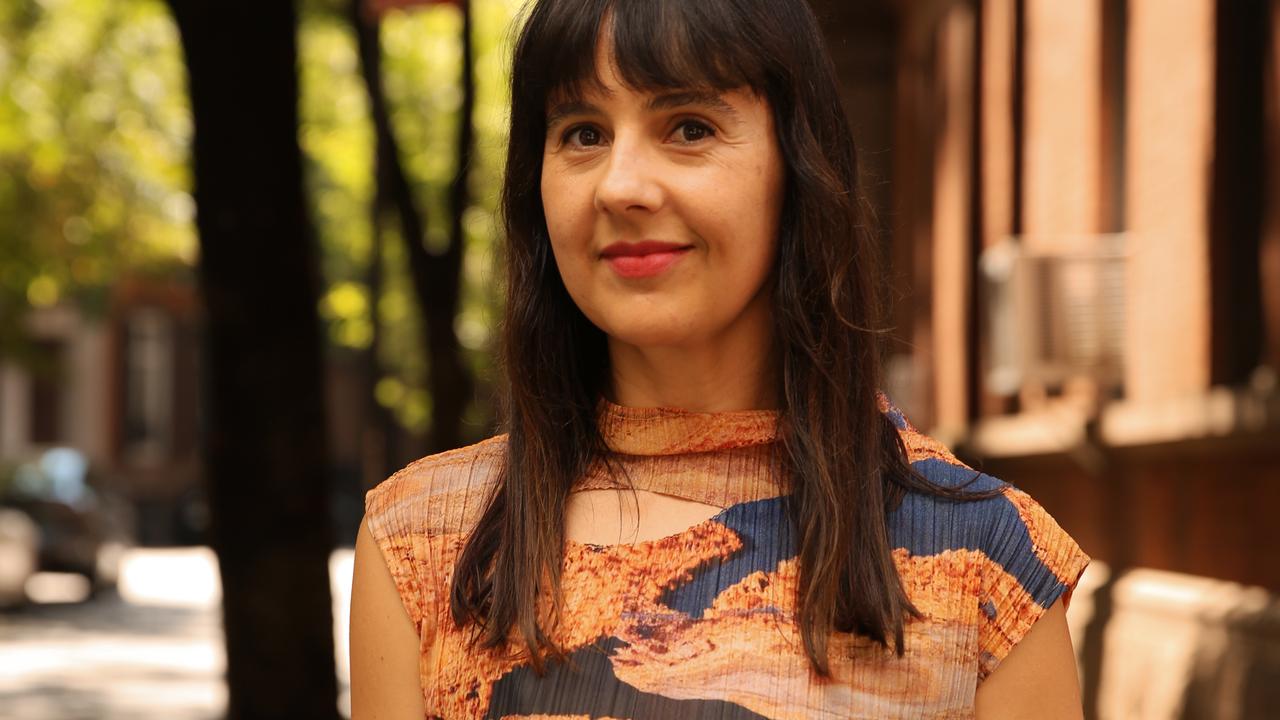The big picture
Christopher Allen guides you through the best of what galeries have to offer on the next few months, here and abroad
THE most important of the big summer shows this year opens today at the National Gallery of Australia in Canberra.
Masterpieces from Paris is a collection of post-impressionist pictures from the Musee d'Orsay in Paris that are exceptionally available for loan because the galleries they usually occupy are being renovated. While this is taking place, the works are on a Pacific Rim holiday, starting in Canberra - until the beginning of April - and going on to Tokyo and San Francisco.
Although the rather breathless press releases from the NGA, especially when the exhibition was first announced, invited a little scepticism, the show certainly does include extraordinary works from a particularly interesting period in the history of modern art. What is perhaps most striking is that the relatively coherent aesthetic of the impressionists is followed by the markedly distinctive styles of their successors.
Thus while inexperienced viewers can have difficulty distinguishing between Monet, Sisley, Pissarro and perhaps even Renoir, no one can fail to see the difference between van Gogh and Gauguin, or Cezanne and Toulouse-Lautrec. And just as the stylistic convergence of the impressionist painters was due to shared beliefs about the nature of the art of painting, and conceptions of the truth that the artist was to pursue, the subsequent disparity is inevitably the result of a divergence of aims.
Interest in optical realism was replaced by a concern with the life of nature and of man, often expressed through symbolic and proto-expressionist simplifications. But while van Gogh found truth in the immemorially ancient labours of the fields, and Gauguin painted the archaic peasants of Britanny before pursuing the dream of the noble savage to Tahiti, Toulouse-Lautrec, like Degas, rediscovered the timeless, almost instinctive gestures of humanity found in the nightclubs and whorehouses of contemporary Paris.
The subsequent period of early modernism will be represented in the Ballets Russes show, opening soon at the NGA and running into March. The fin-de-siecle and early 20th-century theme is continued in Sydney with the Art Gallery of NSW's Rupert Bunny exhibition (to February 21), the first for almost two decades. Bunny is an interesting, if ultimately limited, figure who was a successful painter in Paris for many years, and whose relation to Australian art history is consequently somewhat tangential. He specialises in languorous images of women, sitting around on summer afternoons, apparently forever awaiting a gentleman caller; this show will be reviewed in full in next week's column.
Other shows worth visiting at the AGNSW include the Dobell Drawing Prize, one of the best in recent years, and Garden and Cosmos, a fine collection of Indian paintings of the 18th and early 19th centuries, shown for the first time in an exhibition that comes from the Smithsonian Institution in Washington and the British Museum. Scenes of courtly life in the unreal oasis of a pleasure garden are followed by intricate and charming mythological narratives, and finally a series of unusual works that seek to give pictorial form to the abstract metaphysical ideas of a mystical sect.
Lovers of ancient Egyptian art have a choice between a woefully presented show at the Australian Museum and a beautiful one at Sydney University's Nicholson Museum (while at Sydney University, it's worth visiting the delightful Macleay Museum, once the home of the most important entomological collection in Australia).
Also in Sydney over the holidays, Martin Sharp's psychedelic extravaganza at the Museum of Sydney, reviewed here last Saturday, is well worth seeing, and should also delight children of almost all ages: his well-known Nimrod Theatre posters, together with images of the Luna Park face and other Sydney emblems are accompanied by a video of a project sponsored by Sharp, Tiny Tim's world record-setting non-stop singing performance.
On the same floor at the Museum of Sydney is the display of Martin Mischkulnig's remarkable photographs of desolate townships and ragged settlements in outback Australia, beautifully reproduced in a book with an essay by Tim Winton.
The Powerhouse Museum has a celebration of the 1980s, as nostalgia catches up with us and what we thought was the past turns out to be hot on the heels of the present. This begins next week and runs throughout 2010. Finally, there is an intriguing exhibition at the National Maritime Museum: Mythic Creatures: Dragons, Unicorns and Mermaids. Although it sounds like a show for children, and will probably appeal to them, it is in fact a serious venture organised primarily by the American Museum of Natural History in New York.
The National Gallery of Victoria saves its blockbusters for winter, but has a number of significant shows running over summer, including the Ricky Swallow survey recently reviewed in this column (to February 28). Swallow's wood-carving is remarkable; his ventures into bronze, however, are much less convincing.
Also at the NGV is Chinoiserie (to March 14), reviewed two weeks ago. It's a fascinating exhibition for anyone interested in Chinese art and craft and more particularly in the history of contact and contagion between Europe and China in the early modern period.
This was the time when, among other things, Jesuit missionaries realised you could not really connect with the Chinese unless you came to terms with their culture: they adopted Chinese dress, preached in Chinese and were criticised by rival missionary orders for tolerating so-called ancestor worship and other such traditional practices.
The National Gallery of Victoria also has a small but well-chosen survey of the history of photography, titled Re-view (to April 4), which includes some very early photographic pieces, such as a tiny portrait head by Henry Fox Talbot, the inventor of the (paper) negative, which allowed multiple prints to be made, unlike the daguerreotype, which was a unique print on a metal plate. Among other memorable pictures are works as different as an Egyptian temple by Gustave Flaubert's friend Maxime Du Camp, the first man to photograph Egyptian antiquities; and Kertesz's Melancholic Tulip, In which a curved mirror distorts the flower into an expression of utter despondency.
The Heide Museum of Art is holding a substantial exhibition of Australian cubism (to March 14), which will be reviewed here in a few weeks; this should be an important contribution to a theme in Australian art that has not previously received adequate attention. Cubism was a crucial moment in the story of modernism, although strictly it belongs to the very few years before and at the outset of the Great War. Its postwar manifestations are very different, and in the hands of artists who fail to understand the original impulse, it can be little more than a formal game without motivation or substance.
On an altogether lighter note, Geelong Gallery is hosting the survey of Adrian Feint's flower pieces and landscapes originally shown at Carrick Hill in Adelaide (to February 14).
Further afield, the TarraWarra Museum of Art at Healesville in Victoria has a survey of the work of George Baldessin, who was born in Italy, grew up in Melbourne, studied in Europe and died in a car accident in 1978. Baldessin was a singularly gifted printmaker as well as a sculptor, and his distinctive imagery remains as striking and enigmatic as ever; the exhibition should be a good opportunity to reconsider the significance of his work and its place in the history of Australian art.
The NGV's important survey of John Brack, reviewed here in May, will be on show at the Art Gallery of South Australia in Adelaide until late January, while Adelaide's own fine Hans Heysen show will be in Hobart, at the Tasmanian Museum and Art Gallery, until mid-February. Both were significant figures in the history of Australian art, but each was limited in his own way: Heysen, for all his extraordinary talent, by a tendency to plangent rhetoric; and Brack, who was highly intelligent but had none of Heysen's facility, by aridity of sentiment and want of sympathy.
Brisbane, meanwhile, has the Asia-Pacific Triennial, which will be reviewed here in a fortnight, until the beginning of April. But many Australians will be in Europe during our antipodean summer, and I shall be filing several pieces from there for these pages. So it is worth mentioning briefly a few of the principal exhibitions that travellers should put into their diaries.
The National Gallery in London has a dramatic exhibition of Spanish 17th-century religious sculpture, The Sacred Made Real, until late January, filled with vivid images of pain and piety, intended to make the mysteries of religion dramatically present to the worshipper. Also on a Spanish theme and also until late January, the British Museum has an important exhibition on Moctezuma (also known as Montezuma), the last of the Aztec rulers in Mexico at the time of the conquest by Cortes: a bloodthirsty pre-Columbian culture meets the equally ferocious conquistadores.
On a more peaceful note, Turner and the Masters, at the Tate Britain, to the end of January, deals with the great landscape painter's many borrowings and homages to his predecessors. His admiration for Claude Lorrain is well known, but the exhibition also deals with Turner's interest in Poussin, Rembrandt and others.
In Paris, Titian, Tintoretto and Veronese: Rivals in Renaissance Venice is at the Louvre until early January; this rich exhibition, which includes many masterpieces, from Titian's beautiful Flora to the late St Jerome which is also a self-portrait, is a collaboration between the Louvre and the Boston Museum of Fine Arts, where it was shown from March to August this year. At the Grand Palais, Renoir in the Twentieth Century, similarly until the beginning of January, is, as its title implies, a study of the late work of the master.
Rome has an ambitious survey exhibition of the work of Alexander Calder, the sculptor whose most popular works are the celebrated mobiles, at the Palazzo delle Esposizioni until mid-February.
The Staedel Museum in Frankfurt is holding the first monographic exhibition of Botticelli's painting in Germany, including masterpieces from German and foreign collections, until the end of February. The Birth of Venus and the Primavera, both in Florence, are unfortunately considered unlendable - apart from questions of conservation, they are almost as integral to a Florentine visit as the Sistine Chapel is to Rome - but the Uffizi is sending the beautiful Minerva and the Centaur, in which the goddess of wisdom effortlessly subdues the wild centaur as she takes a lock of his hair in her fingers. The pattern of linked Medici diamond rings on Minerva's robe hints that this is also how Medici policy overcomes the lawless violence of rivals and enemies.
The Botticelli survey is one of the European exhibitions that will be reviewed in these pages during the holiday period; another is the important Seurat exhibition at the Kunsthaus in Zurich, which runs until mid-January. As the title suggests, Georges Seurat: Figure in Space will be concentrating on the place of the human figure in his compositions, but the exhibition will also include beautiful and rare drawings. There will be a group of Seurat pictures in the National Gallery's Musee d'Orsay show, too, so we will have two opportunities to consider the work of this exceptional painter who achieved so much in his short life.
* * *
NOT TO BE MISSED
- Masterpieces from Paris at the NGA: An exceptional opportunity to admire a range of post-impressionist masterpieces.
- Cubism and Australian Art at Heide Museum: A substantial exhibition on a neglected theme in Australian art history.
- Rupert Bunny at AGNSW: A comprehensive survey of a significant, although often disappointing, painter.
- Ricky Swallow at NGV: A brilliant woodcarver who is on much less certain ground with metal casting.
- John Brack at AGSA: An important if eccentric figure whose work is more interesting than engaging.



